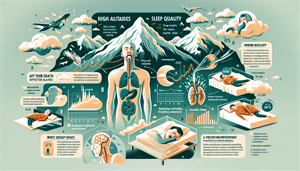
Evaluating the Performance of the STOP-Bang Questionnaire for Sleep Apnea Screening
Obstructive sleep apnea (OSA) is a significant health concern that, when left undiagnosed or untreated, can lead to various health complications and poor quality of life. Identifying and managing OSA effectively requires accurate screening tools. The Stop Bang Questionnaire for sleep apnea is one such widely recognized tool that is used to assess the risk of OSA in patients.
This article post will delve into the questionnaire’s components, effectiveness, benefits, limitations, adaptations, practical applications, and alternative screening methods.
Key Takeaways
-
The STOP-Bang Questionnaire is a widely used tool for OSA screening with high sensitivity and varying specificity.
-
It has various limitations, such as lack of specificity, reliance on self-reported data, and inability to diagnose central sleep apnea or mild cases of obstructive sleep apnea.
-
Adaptations have been made to improve accuracy including gender specific thresholds and additional tests/criteria. It is also commonly used in medical settings for preoperative screening & hospitalized patients.
Understanding the STOP-Bang Questionnaire
The STOP-Bang Questionnaire is an eight-question tool that helps evaluate the likelihood of obstructive sleep apnea in patients. It is widely used for OSA screening and can aid doctors in determining if a sleep study is necessary to further assess the possibility of obstructive sleep apnea syndrome (OSAS). However, keep in mind, the STOP-Bang Questionnaire alone is insufficient to diagnose OSA—a sleep study is required for a conclusive diagnosis.
Components of the Questionnaire
The STOP-Bang Questionnaire evaluates factors such as: Snoring, Fatigue, Witnessed apneas, Blood pressure, Body mass index (BMI), Age, Neck circumference, and Gender. These components play a vital role in assessing a patient’s risk for OSA, given their connection to the common symptoms and risk factors associated with the condition. Snoring, tiredness, observed apnea, and high blood pressure are the self-reportable criteria in the questionnaire, while BMI, age, neck size, and gender are demographic items that contribute to the overall evaluation of a patient’s OSA risk. Patients answer these questions with a “yes” or “no,” and their responses help determine their risk level.
Scoring System
The STOP-Bang Questionnaire is scored based on the total number of affirmative responses to the eight questions, with the overall stop bang score ranging from 0 to 8. Patients’ OSA risk can be classified according to their scores. As a general rule, a score of 3 or higher suggests a heightened likelihood of moderate to severe OSA, indicating a high risk.
The questionnaire is known for its high sensitivity in detecting OSA, with a sensitivity of 84%, 93%, and 100% for detecting all OSA (apnea-hypopnea index [AHI] ≥ 5), moderate OSA (AHI ≥ 15), and severe OSA (AHI ≥ 30), respectively, when the score is 3 or more.
Effectiveness of the STOP-Bang Questionnaire
The STOP-Bang Questionnaire has demonstrated its effectiveness in screening for sleep apnea, exhibiting high sensitivity in detecting OSA across a range of populations, including surgical patients and those attending sleep clinics. However, its specificity may vary, and the accuracy of the questionnaire depends on the population and region. Overall, it is valued for its ability to identify individuals susceptible to sleep apnea and exclude obstructive sleep apnea cases.
Comparison with Polysomnography
When compared to polysomnography—the gold standard for sleep apnea diagnosis—the STOP-Bang Questionnaire has shown to be a reliable and cost-effective tool for identifying individuals at risk of OSA. While polysomnography provides a comprehensive assessment of sleep patterns and breathing, the STOP-Bang Questionnaire offers a quick and efficient method for initial screening, allowing healthcare providers to prioritize patients for further diagnostic testing.


